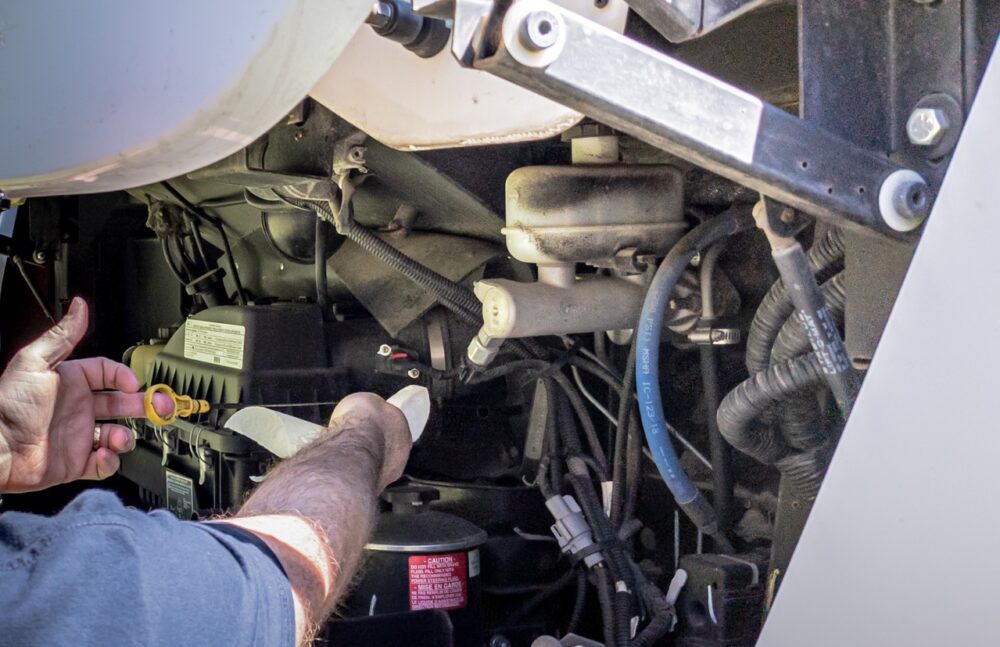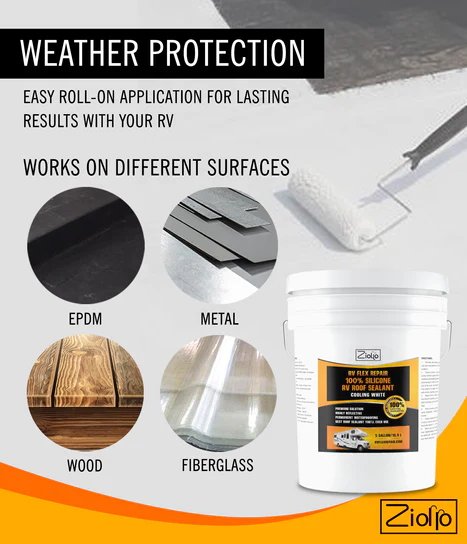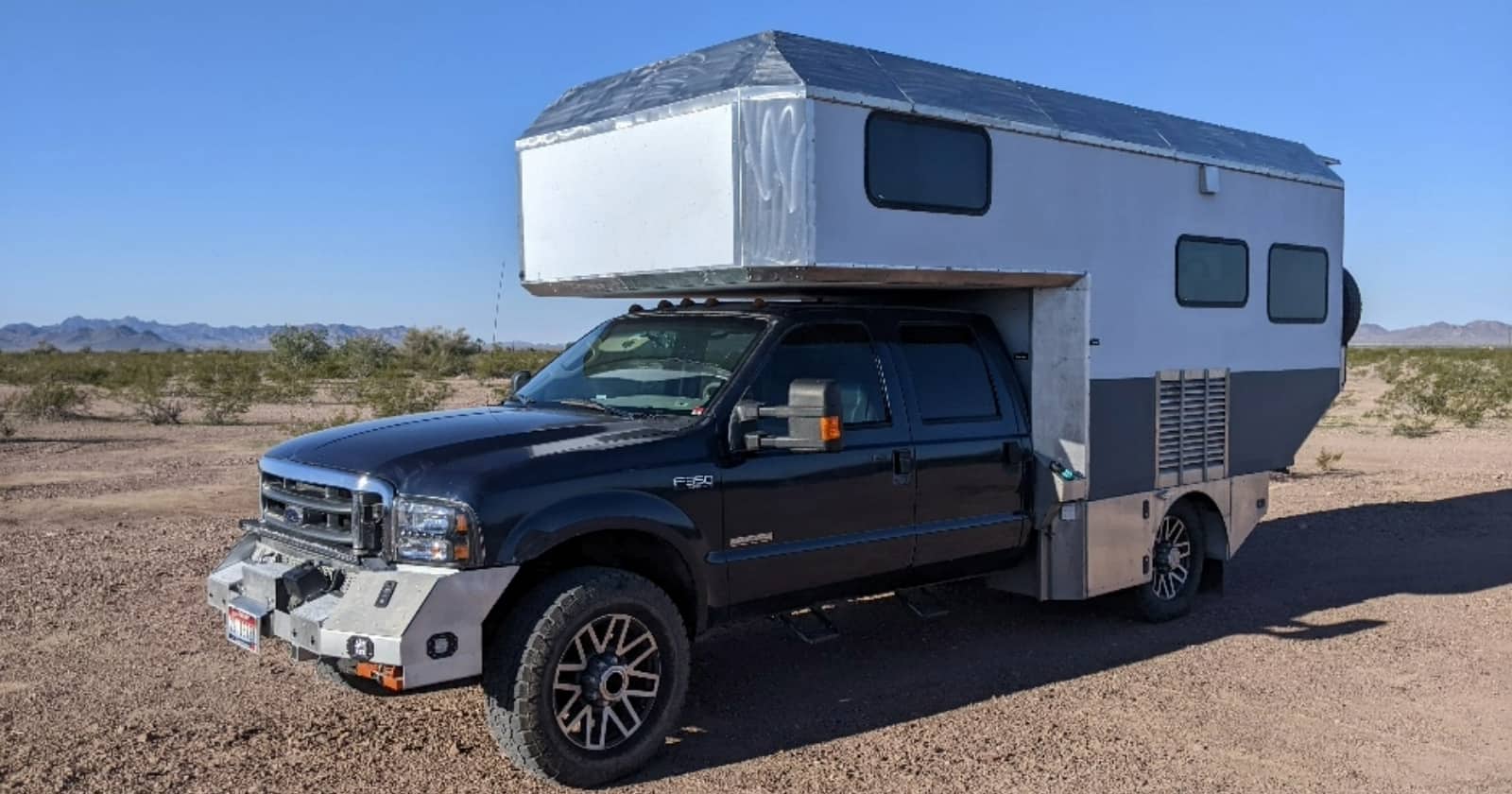Sponsored by Liquid Rubber
How to Prepare your RV for Winter
Preparing your RV for winter is more than a seasonal task; it’s an investment in the life and performance of your motorhome, 5th wheel, camper van, or travel trailer. Regardless of climate, there are a few things every RVer should do each year when the leaves begin to fall. The following guide breaks down essential steps for both colder and warmer climates to help you prepare your RV for winter.
Prepare Your RV for Winter in Colder Climates
Colder climates pose unique challenges, requiring a detailed approach to protect your RV. Improper winterization can be detrimental to many components of your RV including water systems, battery, holding tanks and more. Damage that occurs due to improper winterization can be very expensive to repair.
Water Systems
Winterizing the water systems in an RV is a vital step in preparing your RV for winter. Winterizing prevents water from freezing in the lines, tanks, and water heater, which can cause significant damage. The primary steps in this process involve draining all the water from the system, including fresh water tanks, water heaters, and all the plumbing lines. This is typically done using the drains on each tank and opening faucets to allow air to push water out.
After draining, RV antifreeze is used to replace the water in the system. This non-toxic, pink-colored fluid is pumped through the plumbing system using the RV’s water pump or an external hand pump, allowing it to fill the pipes and tanks, and offering protection against freezing temperatures.
It’s crucial to bypass the water heater when doing this to prevent wasting antifreeze. All fixtures, including faucets, showerheads, and toilets, should be operated to ensure antifreeze reaches every part of the system. If needed, consult the RV’s manual or a professional service provider for specific details unique to your RV, as variations in RV design might necessitate particular attention or adjustments to this process.
RV Roof
Preparing and managing your RV roof for winter is essential to prevent potential damage due to snow, ice, or other winter-related issues. Initially, the RV roof should be thoroughly inspected for cracks, leaks, or any signs of wear and tear. Special attention should be paid to seams, seals, and areas around vents, skylights, or other fixtures, as these are common locations for leaks. Any necessary repairs should be made, and compromised seals should be replaced or resealed with an appropriate RV roof sealant. Liquid Rubber has a host of products that do the job quite well.
After repairing, the roof should be cleaned using a gentle cleaning solution and soft brush, removing dirt, debris, and any mildew or algae that could deteriorate the roof’s material. Liquid Rubber’s Smart Cleaner is an excellent choice for safely cleaning your RV roof. It may also be beneficial to apply a new protective RV roof coating that suits the type of RV roof material, offering an additional layer of protection. If the RV will be stored outdoors during the winter, consider using an RV cover designed to fit the specific model or a specialized RV roof cover. These covers provide protection from UV rays, snow, ice, and rain, reducing potential stress and wear on the roof.
Regular inspections during the winter months are also advised to ensure that no new issues arise, particularly after heavy snow or ice storms. Taking these steps to prepare and manage your RV’s roof will help maintain its integrity and appearance, contributing to the overall protection of the RV during winter storage.
RV Batteries
Managing and preparing the batteries in an RV for winter is a crucial part of the winterizing process. As temperatures drop, batteries can lose their charge more quickly, and if left unattended, they can freeze and become damaged. To begin, RVers should inspect the batteries for any signs of wear, corrosion, or damage, cleaning the terminals and connections as necessary. If the batteries are lead-acid, the water levels should be checked and topped up with distilled water to the proper levels. To maintain charge, the batteries can be disconnected and stored in a cool, dry place where they can be occasionally charged with a trickle charger or battery maintainer to keep them at optimal levels.
Alternatively, if the RV is stored where there’s access to power, the batteries can remain connected, and a quality battery maintainer can be used to ensure a steady charge throughout the winter. The goal is to avoid letting the batteries discharge entirely, as this can cause irreversible damage and diminish their lifespan. Generally speaking, a fully-charged RV battery will not freeze. Following these steps will help maintain the integrity and performance of the RV’s batteries during the cold winter months.
Preparing Your RV Tires for Winter
Properly managing the tires on an RV during the winterizing process is essential to maintaining their integrity and performance. First, the tires should be inspected for any signs of wear, damage, or cracks. Any issues should be addressed before storage. The tire pressure must be adjusted to the manufacturer’s recommended levels, as temperature fluctuations can cause variations in pressure. Over or under-inflation can lead to structural problems in the tires.
Many RVers have configured their RV tire pressure during RV travel season based on per wheel or per axle weights. Often, that PSI is less than the max, achieving a safe but softer ride. For winterization, inflating tires to the max PSI listed on the tire is a good strategy. Just remember to dial them back to your preferred pressures before you hit the road.
During winter storage, the RV’s weight should be evenly distributed to avoid placing undue stress on individual tires. If possible, the RV should be stored on tire pads or jacks to relieve pressure on the tires. Tires should always be covered to protect them from UV rays and the elements. Moving the RV slightly every month can also prevent flat spots from developing.
Finally, using tire covers that protect against UV rays can further safeguard the tires from weathering and cracking. By following these measures, RVers can ensure that their tires remain in good condition throughout the winter months. You’ll be ready to go when RV season returns.
Preparing Your RV for Winter – Motorhome Engines and Fuel
Preparing and managing the engine and fuel tank of an RV motorhome is a key aspect of the winterizing process. Start by performing a full inspection of the engine. Check for any leaks, wear, or other issues that may need to be addressed. Change the oil and oil filter, as used oil can contain contaminants that may corrode the engine over time. Fill the fuel tank to prevent condensation from forming inside. Add a fuel stabilizer to keep the fuel from degrading during the winter months. This helps prevent the formation of gum and varnish that can clog the fuel system. Run the engine for a few minutes after adding the stabilizer to ensure it circulates through the entire system.
Additionally, it’s advisable to check and/or replace other fluids such as coolant. This ensures they are at the appropriate levels and contain the proper antifreeze mixture. The battery should be disconnected or maintained as previously described to prevent it from draining. Covering the exhaust and air intake can prevent rodents from nesting inside.
Starting the engine periodically during storage and letting it run for a while can help keep everything lubricated and in working order. Don’t forget to remove those intake and exhaust covers though! By taking these steps, an RVer ensures that the engine and fuel system remain in optimal condition during the winter. This reduces the likelihood of issues when the vehicle is taken out of storage.
GENERATORS
Those RVers in severe climates must also think about preparing their generator for winter as well. Portable generators can of course brought indoors. RVs with built-in generators should apply the same logic to the generator as they do the engine, as discussed above.

Prepare Your RV for Winter in Warmer Climates
Warmer climates may not pose the same freezing risks, but there are still essential measures that need to be taken to prepare your RV for winter.
Water Systems
In warmer climates, the risk of freezing water lines is reduced. It’s still wise to drain and clean the system to prevent potential algae or bacterial growth. Freshwater tanks and plumbing lines should be drained and cleaned, and any filters replaced as needed. It might not be necessary to use RV antifreeze, but a thorough flushing and drying of the system are advisable.
Be prepared to run your heater and turn on any tank warmers, should a brief cold snap rear its head. Pay close attention to the outside temperature and watch for any freeze warnings, if your area is susceptible to them.
RV Roof
Protecting the RV roof is vital, even in warmer climates, as UV rays can be a year-round concern. Regular cleaning and inspection for wear and tear should be part of your routine. Applying a protective coating suited to the roof material, such as RV Flex Repair, and using an RV cover designed for your specific model can offer extra protection against the sun and elements.

RV Batteries
Battery maintenance is just as important in warmer climates. Regular inspection for wear, corrosion, or damage should be part of your preparation. Ensure proper water levels in lead-acid batteries at least monthly, and maintain a proper charge either through regular use or a quality battery maintainer.
RV Tires
Tire care is consistent across all seasons. Inspect the tires for wear or damage and maintain proper inflation levels. Using tire covers to protect against UV rays and storing the RV on tire pads or jacks to relieve pressure are good practices, even in warmer weather. Regular rotations can also prevent flat spots from developing. On large RVs such as motorhomes where tire rotation isn’t really an option, make a point to get out on the road at least once a month or so with the RV. This also gives your other components, such as slides and leveling jacks, a brief but necessary workout.
Motorhome Engines and Fuel
In warmer climates, it’s still essential to inspect the engine for leaks, wear, or other issues, change the oil and oil filter, and keep the fuel tank filled to prevent condensation. Utilizing a fuel stabilizer can help maintain the quality of the fuel even if the motorhome won’t be used for some time. Regular start-ups during the winter season can keep everything lubricated and in working order.
Conclusion
Properly preparing your RV for winter, whether in cold or warm climates, is a multi-step process. From draining water systems to focusing on the RV roof, each action is part of a larger strategy to maintain and protect your investment. By following these guidelines tailored to warmer climates, RVers can ensure that their motorhome, 5th wheel, camper van, or travel trailer remains in top condition throughout the winter months, and is ready for the road when the new season begins.




The 1 critical step that is never mentioned in the winterization is to do a final dump of your gray water so the liquid does not freeze and shatter your drain pipe. Not that this happened to me. But it did because no tutorial mentioned this.